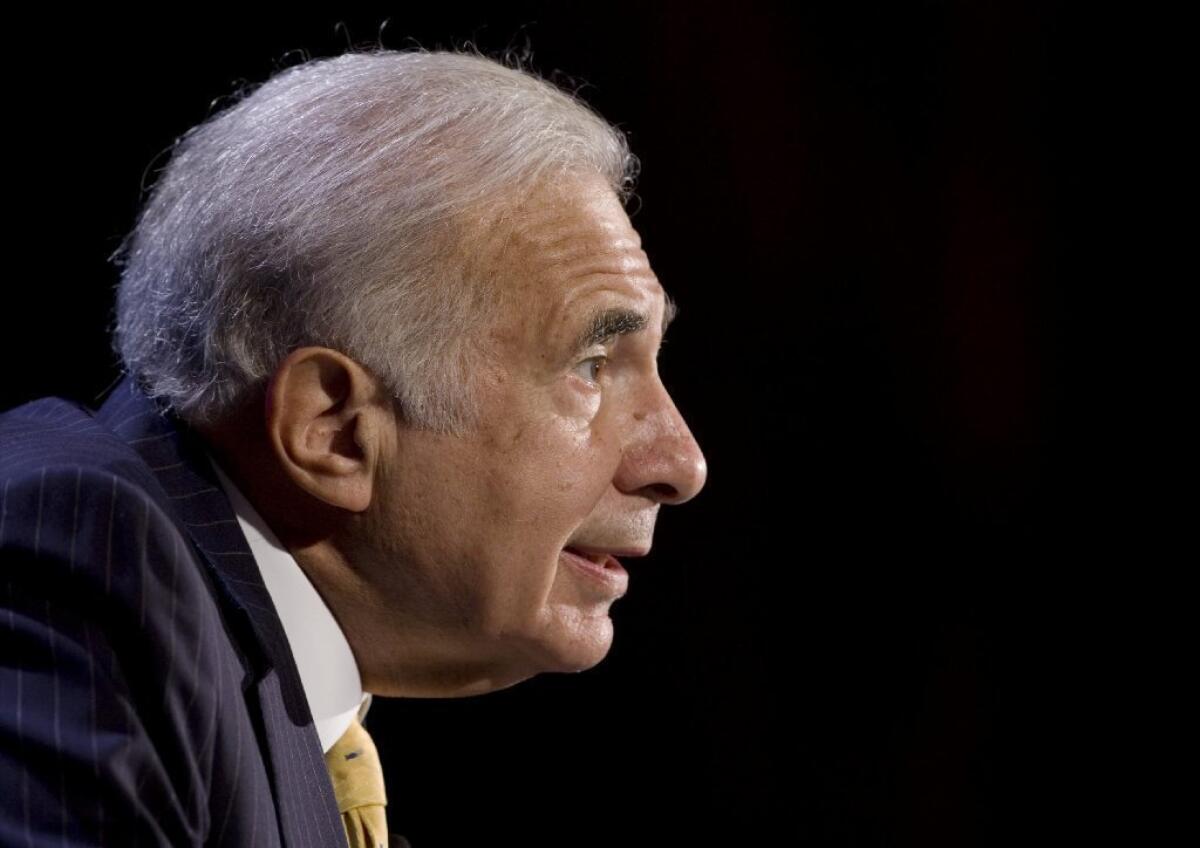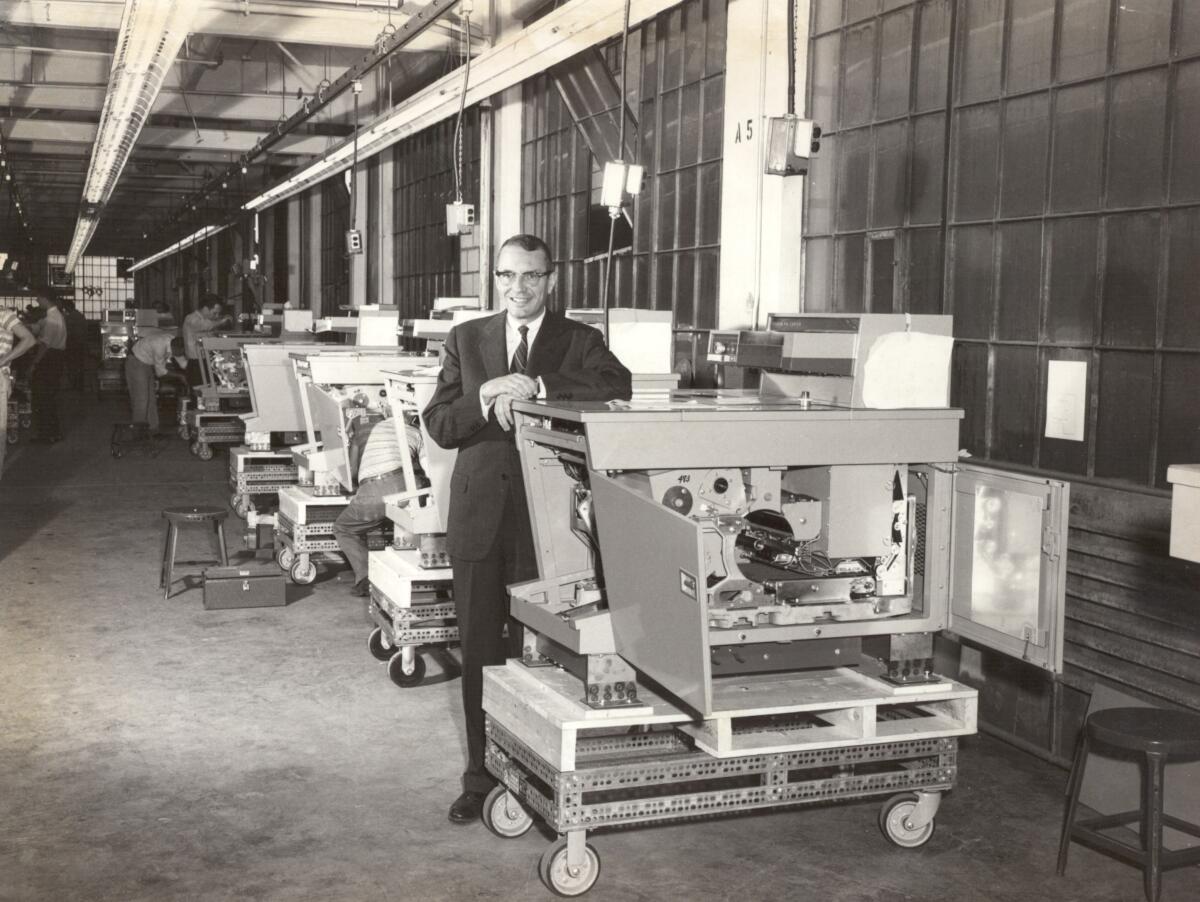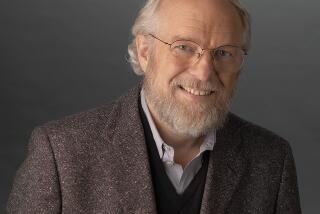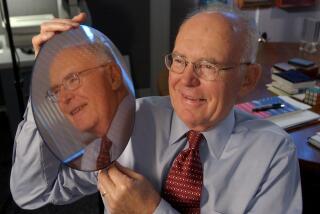HP and Xerox: Can two dinosaurs carry each other into the high-tech future?

- Share via
For anyone who has grown up in the computer technology era, the recent histories of HP (that is, Hewlett Packard) and Xerox must elicit nothing but sadness.
What’s saddest of all is the idea that merging these two doddering old hulks may be the only way to save them.
HP and Xerox have a few features in common. They both have storied pasts. They’re both wedded to a strategy of making supposedly innovative advances in commodity products with stagnant or declining markets — printers and personal computers in HP’s case, and office printers and copiers in Xerox’s.
Xerox buying HPQ: Brilliance? A Dare? ‘Two Garbage Trucks Colliding?’
— Investment analyst Toni Sacconaghi
They both seem to have put more effort lately in financial and corporate re-engineering than, you know, engineering. Both are undergoing severe downsizing, with Xerox planning to cut $640 million in expenses and HP looking at cutting $1 billion by 2022, in part by shedding 9,000 employees.
Something else they have in common: Carl Icahn.
The veteran activist investor currently holds 10.6% of Xerox stock and, according to an interview he gave this week to the Wall Street Journal, 4.24% of HP. Merging the two companies appears to be his idea, facilitated in part by his quashing a plan for Xerox to merge with Japan’s Fujifilm in 2018 and subsequently installing his associate John Visentin as Xerox chief executive.
Icahn would gain from both sides of the deal. “I think a combination is a no-brainer,” he told the Journal. “I believe very strongly in the synergies.” He didn’t say much about leading the merged firm into the unknown by resurrecting their former reputations for inventiveness, but rather saw it as a cash cow still capable of being milked.
“I divide every disagreement into two classes,” Bob Taylor was telling me.
“These types of companies that are in shrinking industries tend to decline much more slowly than many market participants may predict, while continuing to generate substantial amounts of cash,” he said.
The proposed bid would value HP at $22 per share, or $33 billion. The shares closed Thursday at $20.13. The HP board says only that it’s “committed to doing what is in the best interests of all HP shareholders.” Some speculate that Icahn may actually be interested in having HP bid for Xerox, a smaller company.
One can’t argue with Icahn’s basic insight. HP and Xerox are indeed in shrinking industries. Arguably, their long-term declines were inevitable, for the number of big corporations that can remain at the apex of technologically vibrant industries for more than a generation or two can be counted on the fingers of one hand.
But it’s also arguable that lack of imagination and stagnation bred by success also contributed to their fates. It’s possible to craft another rule of thumb out of the life stories of both Xerox and HP: When a company runs out of ideas for new products and new markets and turns instead to playing around with corporate restructuring, the handwriting is on the wall.
Let’s look at how this has played out.
Start with Xerox. Its foray into truly farsighted innovation was covered in my 1999 book “Dealers of Lightning,” which told the story of the founding and first years of its Palo Alto Research Center, the legendary Xerox PARC.

Until well into the 1970s, Xerox ranked as one of the most successful corporations on Earth. The original source of its almost unimaginable wealth was the Xerox 914 copier, introduced in 1959, which revolutionized office routine by making copies cheap and fast.
It would later be said that Xerox became a prisoner of the vision of Chester Carlson, the main inventor of the 914, because it was so very successful that the company viewed all aspects of its business through the 914 prism.
That’s true in a sense, but the company’s most successful invention really was its business model: The 914 could not be purchased but only leased, with the lease payments based on how many pages an office put through it. This was the “click,” and the model was so lucrative that the executive who reputedly conceived it, Peter McColough, eventually became Xerox’s chairman and CEO.
Xerox’s franchise eventually came under attack from Japanese companies selling cheaper copiers that could fit on a desk rather than a behemoth installed in a “copier room” to be fed by secretaries standing in line. McColough also perceived that the company was vulnerable to technological developments that might make paper obsolete in the office of the future.
As a counterstrike, he founded PARC and allowed it to be established in Palo Alto, as far from the company’s Rochester, N.Y., headquarters as possible. PARC was staffed with a cadre of brilliant young engineers and computer scientists who rewarded their independence from Rochester by inventing the personal computer, Ethernet and the laser printer, among other novelties.
Xerox has been ridiculed for failing to exploit these inventions (except the laser printer, from which it earned millions), but that’s unfair. The corporation had a sales force of hundreds of thousands trained to put big copier machines into big offices.
Computers: The smart system was ahead of its time in 1981, but few were sold. Its maker announced end of technical support this year.
The market for PCs didn’t exist and was scarcely foreseeable; it would eventually be exploited by a company with fewer than 50 employees, Apple — into which Xerox actually pumped a few millions in venture capital. PARC is now a wholly owned subsidiary of Xerox.
Xerox did put PARC’s technology into a product, the Xerox Star, introduced in 1981. The Star was a gorgeous machine, integrating software and hardware so perfectly it never crashed, with a graphical display and point-and-click mouse (I witnessed a 1998 demo of a Star cobbled together from bits and pieces its engineering team exhumed from, sometimes, their attics). But it was conceived on a Xerox office machine scale, with a central unit needing its own room and big desktop workstations. A full networked installation would cost $250,000 in 1981 dollars. The product failed.
Xerox’s struggles in the last couple of decades have been painful to witness. The stock has almost doubled this year, but that only puts it back roughly to where it was five years ago. The company’s most recent innovation was its conversion into a holding company in July, a nugatory restructuring that has virtually no impact on shareholders, customers, or anyone else, except perhaps for the investment bankers and lawyers collecting fees for the paper shuffling.
The corporate ambition, according to its 2018 annual report, is to “return at least 50% of free cash flow to shareholders” via dividends and share buybacks. Oh, yeah, it also says it wants to “re-energize innovation,” though its R&D spending of $397 million last year represented about 4% of its $9.8 billion in revenue. By comparison, Apple spent $16.2 billion on R&D last year. Granted, Apple is a much bigger company, with $260 billion in sales, but its R&D spending is 6% of revenue.
Then there’s HP. The company’s legend began with founders David Packard and Bill Hewlett inventing an audio oscillator in a Palo Alto garage (now a corporate landmark) in 1938. Not only were the company’s products standouts in their field, so was its management style — nurturing engineering talent through collaboration and a flat corporate hierarchy dubbed “management by walking around.”

The rapidity of the PC and internet revolutions eventually threatened to leave HP behind. Its most profitable business model was a razor-and-blade strategy in its printer line — sell the printer, and make money from repeat purchases of consumable ink. But those riches began to wane as cheap knock-off cartridges infiltrated the market.
In 1999, HP’s traditionalist CEO Lew Platt stepped down and gave way to Carly Fiorina, then the CEO of Lucent Technologies. She took over a company that was big in PCs, a stagnant market with profit margins close to zero.
As things turned out, Fiorina’s imagination focused largely on burnishing her personal image. She boasted about HP’s superior innovation, but in truth HP technology was all but invisible in many of its products. HP marketed “Apple iPod by HP,” a product identical to the Apple version except for an HP logo etched into the case. Her big consumer product breakthrough was a hybrid computer/home-theater-in-a-box that was a showcase of other companies’ innovation — it had a Microsoft operating system, ran on an Intel chip and used Apple’s iTunes as its music file system. When I costed out its components in a 2005 experiment, I found they could be had separately for about $900. HP sold the same things bundled together for $1,899.99.
Ouster of HP chief Hurd has look of panic
Fiorina’s downfall at HP could be traced to her doubling down on PCs through the 2002 acquisition of Compaq Computer. The deal was compared by Scott McNealy, then the head of Sun Microsystems, to “two garbage trucks colliding.” The deal inspired a ferocious internal war, with some of the founders’ own children lining up in opposition. More to the point, the acquisition failed to turbocharge HP. Fiorina was sacked in 2005, after presiding over a stock slide of about 60% during her tenure.
Her successor, Mark Hurd, was credited with turning the company around, though during his tenure a scandal erupted at the board level when it transpired that some board members and journalists had been spied on as the company searched for the sources of corporate leaks. Hurd, who died last month, was forced out of his job in 2010 amid accusations of sexual harassment (unfounded) and financial misdeeds (validated). He eventually became CEO of Oracle.
His eventual successor was former EBay CEO Meg Whitman, who took over in 2011. Whitman touted a computer based on a hugely innovative technical architecture and called “The Machine,” which is still in development but with sharply scaled-back ambitions.
Whitman’s big idea was another feat of corporate restructuring in 2015 — the hiving off of HP’s business technology service division as Hewlett Packard Enterprise, with its PC and printer businesses remaining with the original company. The investment community hasn’t been particularly thrilled about the move, since both offspring face difficult markets and lots of competition.
Shareholders of the big high-tech company Hewlett-Packard have done pretty nicely over the last year.
HP’s third-quarter report was unencouraging, with printer income down 5% over the year-earlier period. On the plus side, the company returned $800 million to shareholders through dividends and share repurchases, which should please the Carl Icahns of the world.
It’s fair to assume that good and innovative work is still being done at Xerox and HP, both of which employ platoons of talented engineers and scientists. Indeed, HP’s Spectre x360 laptop, refreshed late last year, has received sterling reviews in the consumer tech press.
Will the proposed merger be a plus for these companies or a minus? Toni Sacconaghi, a tech analyst at Sanford C. Bernstein, is among the doubters. “The traditional printing and copying business is slowly collapsing,” he said in a note to clients. Mischievously, according to Fortune, he titled his analysis, “Xerox buying HPQ: Brilliance? A Dare? ‘Two Garbage Trucks Colliding?’”
It’s hard to imagine a tradition of truly groundbreaking work arising from a merger of two companies determined to cut costs. The sad truth is that the vast majority of corporations, especially in technology, get one or perhaps two cracks at reaching the business pinnacle and fewer can stay there.
IBM, General Electric, Apple and Microsoft have shown that it’s possible to survive a few turns of the wheel, but the first two are struggling and the latter two have had their ups and downs. For the most part, yesterday’s kings of the hill are doomed today or tomorrow to drift off, like old pensioners, into the sunset.
More to Read
Inside the business of entertainment
The Wide Shot brings you news, analysis and insights on everything from streaming wars to production — and what it all means for the future.
You may occasionally receive promotional content from the Los Angeles Times.











